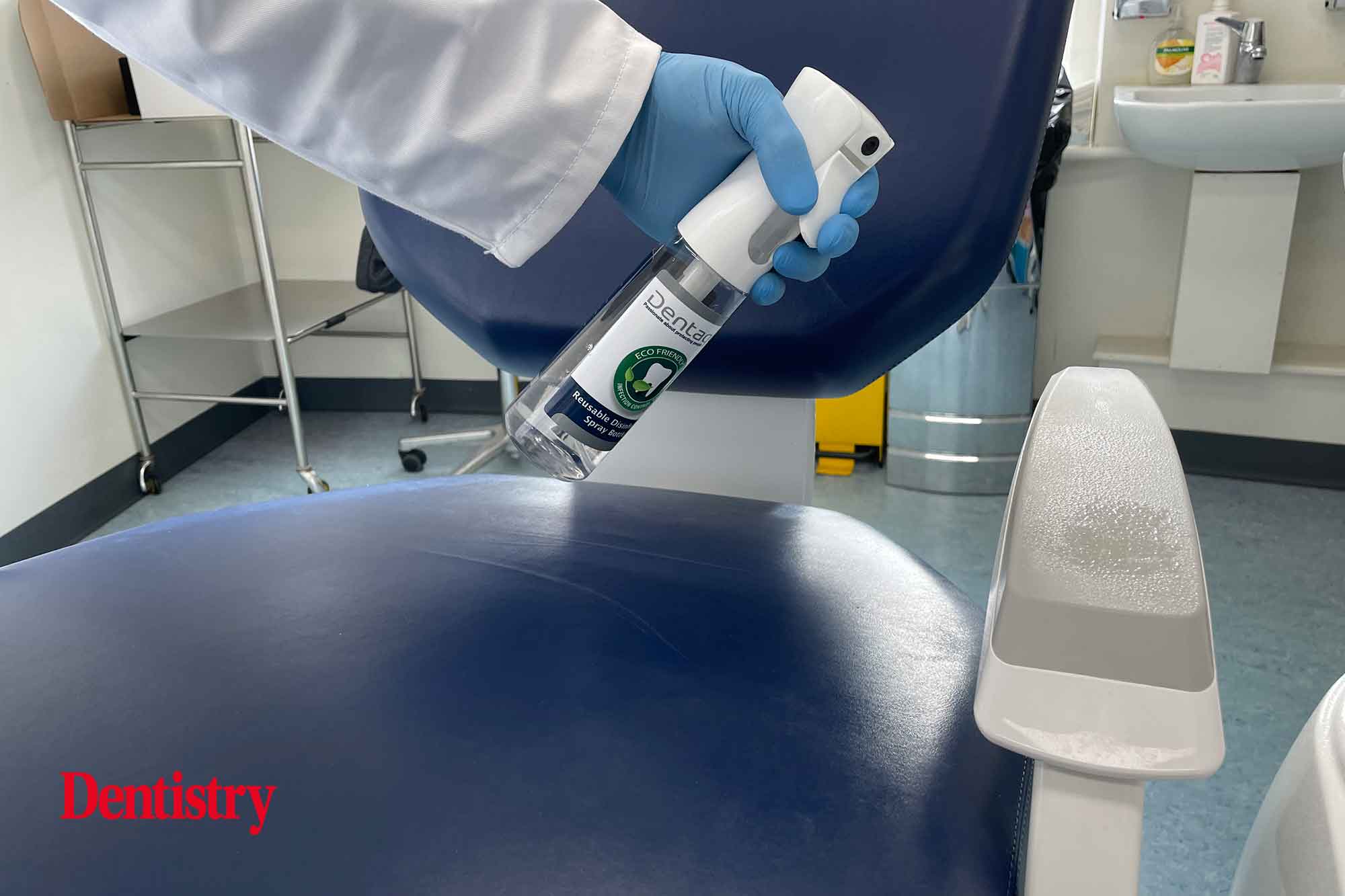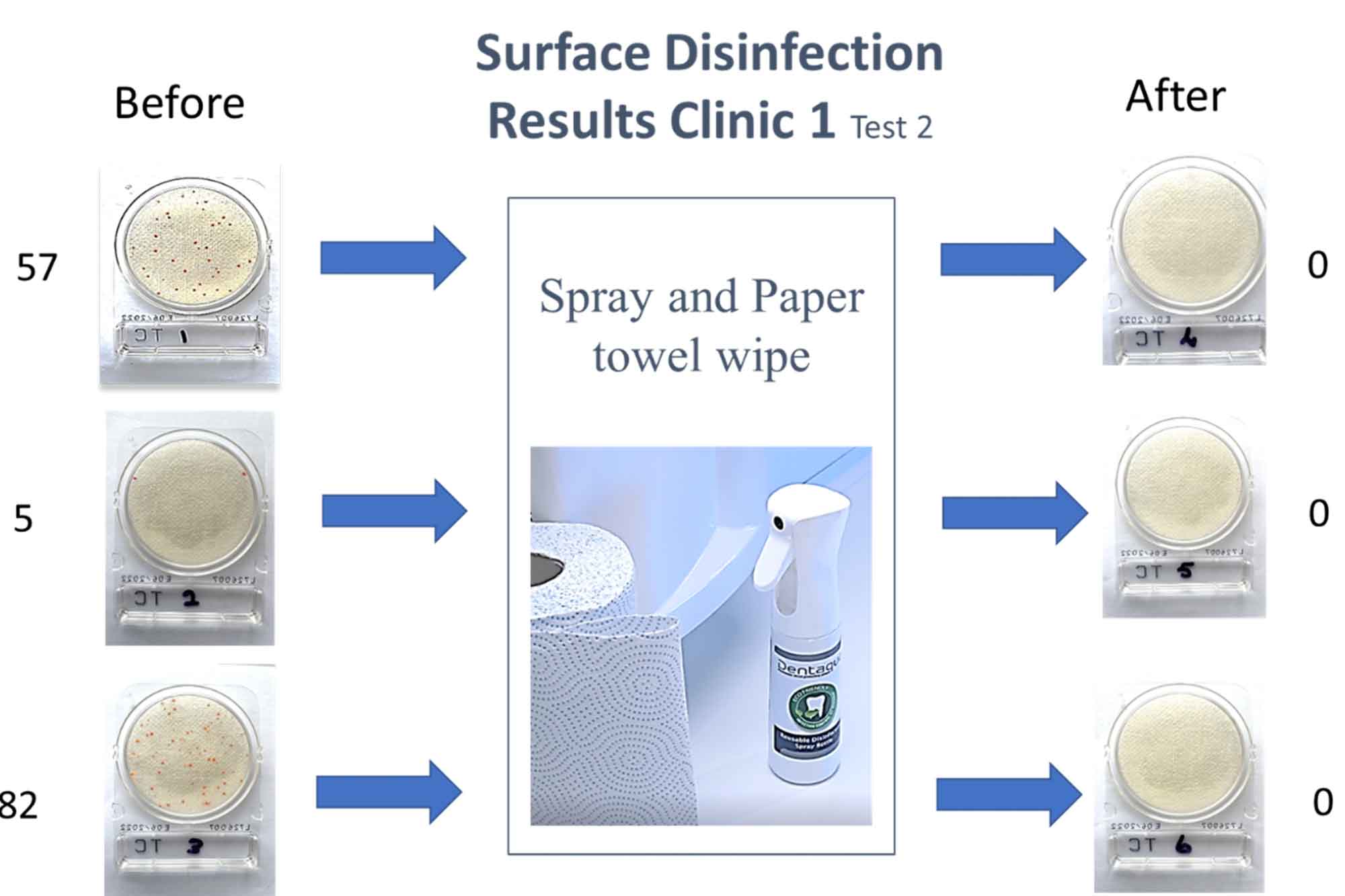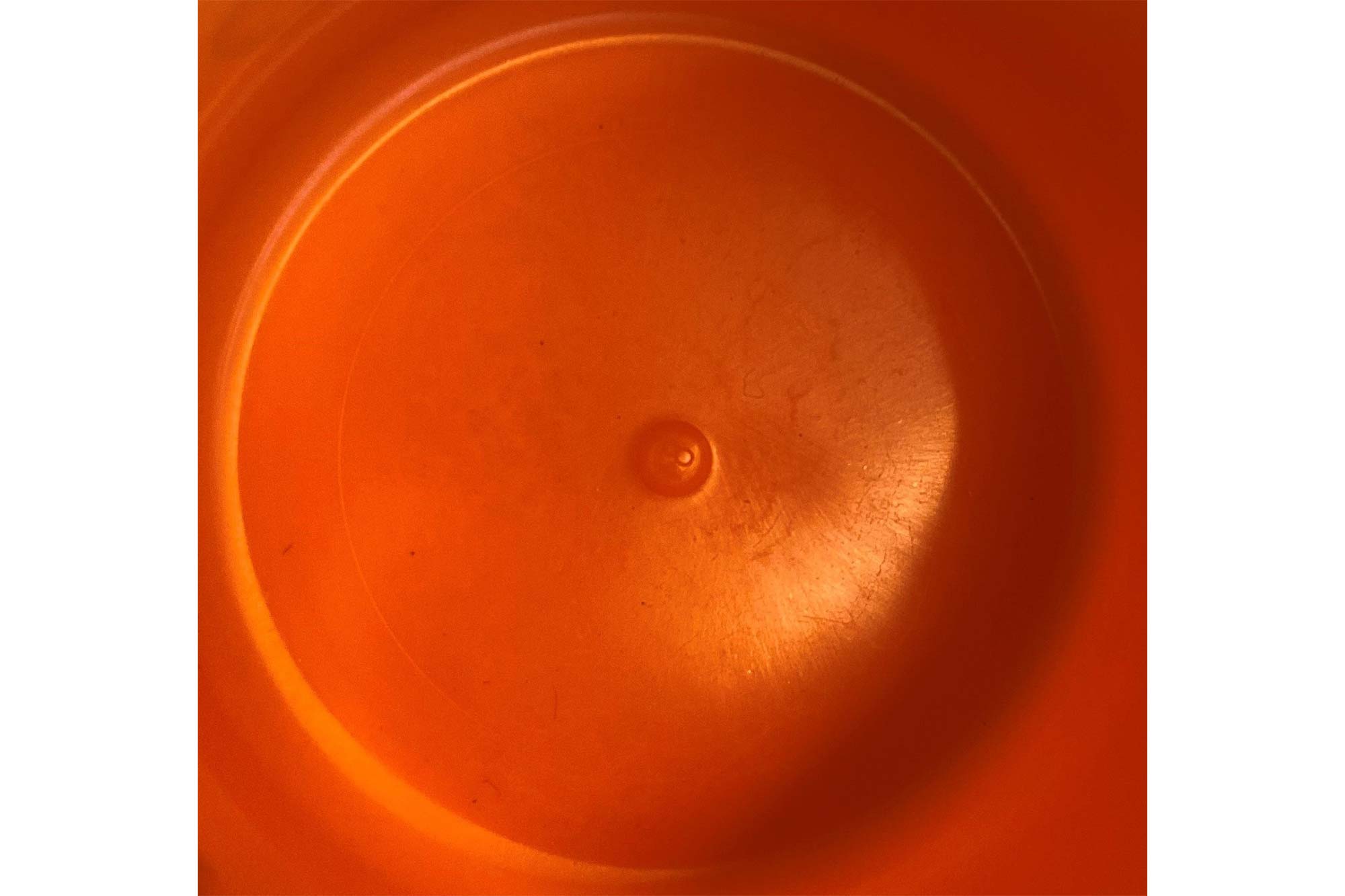Anne O’Donnell tests the Dentaqua hypochlorus acid disinfection system and compares it to other current solutions on the market.
Dentists require disinfection solutions that are inexpensive, safe, and effective. A typical clinic purchases several different disinfectants including surface disinfection wipes, hand sanitisers, dental unit water line disinfectants and impression disinfectants, to name a few.
The COVID-19 pandemic has added to the disinfection requirements, costs and time.
At Mullingar Dental Centre, we have found ourselves taking a whole new approach to infection control.
This resulted in us spending hundreds of euros per month on wipes and other disinfectants. Whilst also increasing the number of tasks. This resulted in significant time delays between patients.
We also became conscious of the impact large amounts of single-use wipes are having on the environment.
The clinic is always looking out for new and innovative methods to improve efficiency and safety while reducing costs.
Dentaqua, Figure 1, is designed and manufactured in Ireland. It was rented monthly allowing the clinic to produce on-site eco-friendly sanitiser for use in:
- Surface disinfection
- Hand sanitising
- Dental unit water-line disinfection
- Environmental fogging between patients
- Impression disinfection.
The unit produces super-oxidised hypochlorous acid using just salt and water.

Figure 1: Dentaqua device
Hypochlorous acid is found naturally in white blood cells of mammals, including the human body. It is non-toxic and has been used as a safe wound care solution for many years.
Hypochlorous acid is known to be an extremely effective disinfectant. It is up to 100 times more effective than chlorine and is recommended as an ideal cleaning and disinfecting agent, as outlined in the Journal of Oral and Maxillofacial Surgery, ‘Hypochlorous acid a review’ (Block and Rowan, 2020).
Hypochlorous acid has been identified by the US Environmental Protection Agency as effective against COVID-19 (.
The mechanism of disinfection involves the destroying of the cell wall of microbes or viruses. It allows the disinfectant to destroy or inactivate them (Hagbom et al, 2015).
Testing challenge
Testing was designed to challenge Dentaqua on both surface and dental unit water-line disinfection. The procedures used were designed to accurately replicate how Dentaqua solutions are typically used in a dental practice.
Sampling and sample analysis were performed according to best practice. Equipment and test kits were, as far as practicably possible, compliant with relevant industry standards.
Surface disinfection
The AOAC and Microval ISO EN16149 and ISO 21527 accredited Compact Dry Total count test method were used in this study. These were obtained from Nissui Pharmaceutical Ltd.
Following a patient treatment, swab samples were taken from three locations on the chair, Figure 2:
- Arm rest
- Touch screen
- The chair horizontal surface adjacent to the spittoon.

Figure 2: Swabbing near the spittoon
These locations were then disinfected using the Dentaqua solution and compostable paper towel (brand name Plenty, which was purchased from the local supermarket).


Figure 3: Disinfection of the dental chair using Dentaqua solution and paper towels
Cleaning and disinfection was executed by spraying all surfaces, allowing one-minute contact time. The surfaces were then wiped down using a paper towel folded into six-inch square pads that were sprayed with Dentaqua disinfectant until damp.
Dental unit water-line testing
Two water samples were taken from each dental chair. One from the three-in-one and one from the high-speed tools.
The dental unit water bottles were filled at the start of each day from the Dentaqua device. Dentaqua water contains a small amount of super-oxidised hypochlorous acid and provides residual disinfection to remove biofilm and other harmful microbes from the waterlines. This ensures the aerosols produced by the tools are safe for patients and staff.
The installation of the Dentaqua system has kept Mullingar Dental Clinic’s waterlines safe for over a year.
It is important to note that implementing the Dentaqua dental unit water-line disinfection system eliminates the requirement for weekly shock-dosing, giving staff one less task to worry about each week.
There are three dental chairs in Mullingar Dental Centre. Samples were taken from the three-in-one and high-speed tools in each.
The samples were taken in a sterile bottle with sodium-thiosulphate (Figure 4) used to neutralise the residual disinfectant.
The neutralisation of the disinfectant prevents any residual disinfectant affecting the test results from the time of testing to delivery to the microbiology laboratory.

Figure 4: Water sample retrieval
The water samples were tested using heterotrophic plate count in waters with 10-day incubation at 20 degrees C on R2A media (Ref: Dublin Dental College Ecasol publication).
This method facilitates the recovery significantly more with microbes than more traditional water test methods, It is regarded as the only appropriate method for accurate dental or medical-use water analysis.
Results
Table 1: Results of the surface disinfection challenge
| Test number | Location | Total count before cleaning 25 Jan 2021 | Total count post disinfection 25 Jan 2021 | Total count before cleaning 15 Feb 2021 | Total count post disinfection 15 Feb 2021 |
| 1 | Dental chair arm | 43 | 0 | 57 | 0 |
| 2 | Dental Chair Touch screen | 66 | 0 | 5 | 0 |
| 3 | Chair Horizontal surface (Beside Spittoon) | 298 | 0 | 82 | 0 |

Test 1: Total count swabs taken on 25 Jan 2021

Test 2: Total count swabs taken on 15 Feb 2021
Table 2: Results of the DUWL challenge
| Clinic | Instrument | Results | Centre for disease control limit | |
| 1 | High Speed | 170CFU/ml | 500 CFU/ml | Pass |
| 1 | 3-in-1 | 350 CFU/ml | 500 CFU/ml | Pass |
| 2 | High Speed | 54 CFU/ml | 500 CFU/ml | Pass |
| 2 | 3-in-1 | 37 CFU/ml | 500 CFU/ml | Pass |
| 3 | High Speed | 250CFU/ml | 500 CFU/ml | Pass |
| 3 | 3-in-1 | 1,100CFU/ml | 500 CFU/ml | Fail |
Many studies show that dental chair output water is frequently contaminated by large numbers of various micro-organisms (bacteria, fungi, protozoa, viruses).
This contamination results from the growth of microbial biofilms on the internal surfaces of dental waterlines.
Microbial contamination in DUWLs may originate from the mains water piped into the dental unit, the failure of anti-retraction valves, and contamination from bottled water systems.
Total bacteria counts as high as 1,000,000 CFU/ml have been recorded and figures of 50,000 CFU/ml are a worrying, yet very regular occurrence.
As you can see from the results above, all DUWL figures in Mullingar Dental Centre are below 350 CFU/ml except for one sample from the three-in-one in chair 3, which was 1,100 CFU/ml. Whilst this figure is relatively low, it is above the guidelines for dental unit water.
On investigation, it was discovered the chair in clinic 3 had two three-in-one lines (left and right). This chair is primarily used by a dental hygienist, who would not have an assistant. Hence the three-in-one on the assistant’s side is not used regularly.
The water sample taken from this chair was taken from a three-in-one on the assistant side. This often lies stagnant for long periods.
Following the test result we have decided to remove the second three-in-one from this chair rather than implementing a regular flushing routine for both.
The slightly higher result in the three-in-one from chair 3, prior to its removal, demonstrates the importance of proper dental waterline disinfection and management.
Discussion
The results demonstrate that Dentaqua is an effective disinfection solution for any modern dental clinic.
The effectiveness of super-oxidised hypochlorous acid for surface and water-line disinfection has been proven extensively in many peer-reviewed papers. This real-world clinical study has demonstrated the same.
It is reassuring to have real in-clinic results to validate our processes. This has provided us with the assurance that our protocols are effective, ensuring patient safety.
Hypochlorous acid is now widely used in the dental industry. However, not all hypochlorous acid solutions are the same. Some are corrosive due to inefficient generation.
To demonstrate the difference, we evaporated equal amounts of Dentaqua solution and a commercially available bottled hypochlorous acid.
In the picture below, it is clear there is no residue of salt crystals in the Dentaqua solution. The residual salt in the bottled solutions will cause corrosion of your dental chair and tools.

Bottled commercially available HOCL – visible salt crystals

Dentaqua (no salt crystals)
Dentaqua’s patented technology was designed specifically for dentistry. It has been evaluated in long-term clinical studies and is proven compatible with dental equipment.
From a cost reduction point of view, Dentaqua is saving Mullingar Dental Centre approximately €3,500 per year. With reduced purchasing costs for disinfection wipes, chemicals, and reduced labour.
The staff enjoy the fact that the system is easy to use and produces fresh disinfectant every morning.
There are no containers to store or to dispose of, which makes for easier practice of stock control. There is reduced ordering and management of supplies.
Previously our practice would order wipes, spray disinfectant, impression disinfectant, waterline tablets and would ensure that adequate supplies of all were in stock at all times.
Now, we produce our disinfectant requirement on-site, at the touch of a button with no stock management issues.
The big bonus is the eco-friendly aspect, eliminating single-use wipes, harmful chemicals and all of the associated plastic packing. I have no problem recommending the system to any other dental clinic.
References
Block M and Rowan B (2020) Hypochlorous Acid: a review. J Oral Maxillofac Surg 78(9): 1461-6
Hagbom M, Nordgren J, Nybom R, Hedlund KO, Wigzell H and Svensson L (2015) Ionizing air affects influenza virus infectivity and prevents airborne-transmission. Sci Rep. 5: 11431

